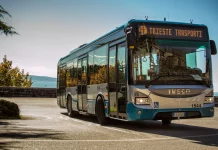by Nina Vaclavikova
Interview: Maurizio De Blasio, the city’s Councilor for Education and Family Policies
The city of Trieste has set out new guidelines for the use of digital devices in municipal educational and school facilities, aiming to encourage a more mindful approach to technology among children and young people.
The policy, outlined during a press conference on Monday by Maurizio De Blasio, the city’s Councilor for Education and Family Policies, stems from a resolution adopted by the municipal government on August 6. The document is intended as a framework for forthcoming regulations, with instructions tailored for staff, parents and guardians, and distinct rules for different services, including schools and municipal youth centers, known locally as ricreatori.
“This is a living document, designed to address an important issue for the growth of our young people,” Mr. De Blasio said. “Research in recent years has highlighted the need to promote more conscious use of digital devices, such as mobile phones. The aim is not only to provide guidance for educators, but also to involve families in building a positive example.”
The guidelines focus on setting clear boundaries for device use, particularly during key moments of interaction — such as arrival at school or during activities — to ensure that relationships and engagement remain at the center of the educational experience.
Antonella Brecel, head of pedagogical coordination for the city’s educational services, emphasized that “children have the right to live their childhood in a safe and balanced way,” adding that responsible adult behavior is essential. The initiative, she said, is not intended to demonize technology, but to foster its use in ways that support authentic interaction. “The objective is to be present in the moment — in relationships, in play, in shared experiences,” she said.
The plan is built on two main pillars: training municipal staff in conscious device use, and engaging families in the process. For schools and early childhood services, this means limiting devices during key transitional or relational moments. For youth centers, which serve children and teenagers from ages 6 to 18, the policy also calls for guiding older students toward more responsible, self-regulated use of technology.
Rossella Marega, who coordinates the city’s youth centers, noted that these spaces play a critical role during preadolescence and adolescence, when young people are developing their identity and social skills. “Creating an environment with clear boundaries allows young people to experience freedom responsibly,” she said. “Growth happens through relationships, and that requires a strong partnership with families.”
The city’s educational services have been promoting awareness of technology use among parents and educators for several years. Officials say the new guidelines are part of a broader effort to maintain a “systemic alliance” between families and educational institutions, with the shared goal of safeguarding children’s well-being in an era where digital connection often competes with real-life interaction.
A technical directive translating the framework into concrete rules will be shared with educational facilities in the coming months, along with training sessions for staff. City officials say the ultimate aim is to balance the benefits of technology with the need for meaningful, face-to-face relationships — a priority they see as essential for healthy development during childhood and adolescence.






























